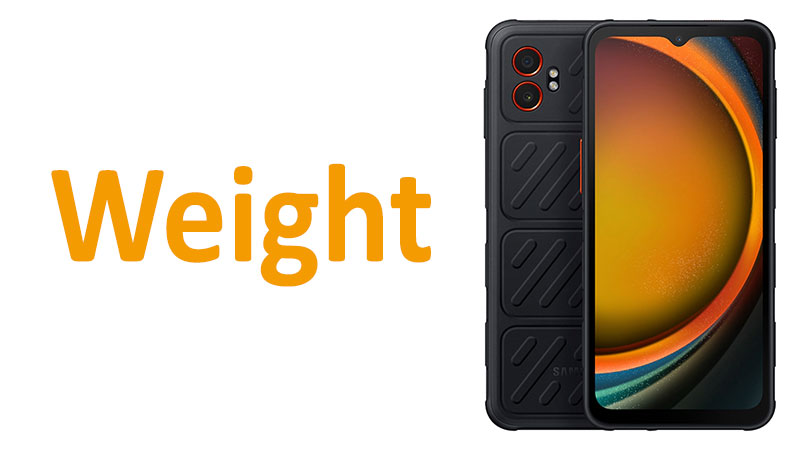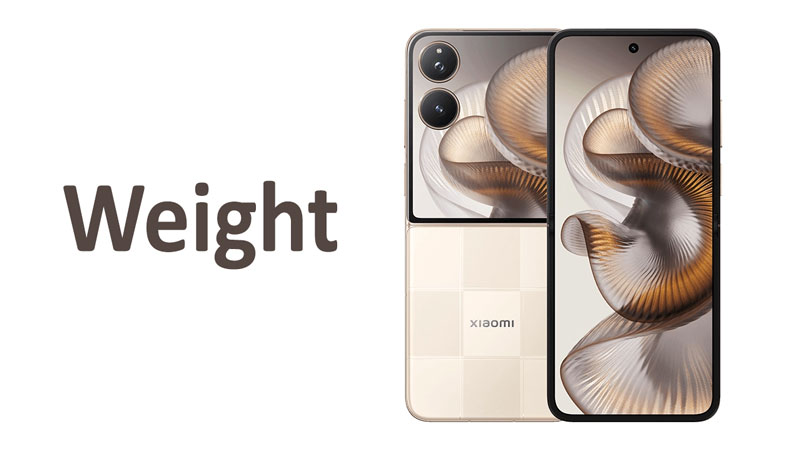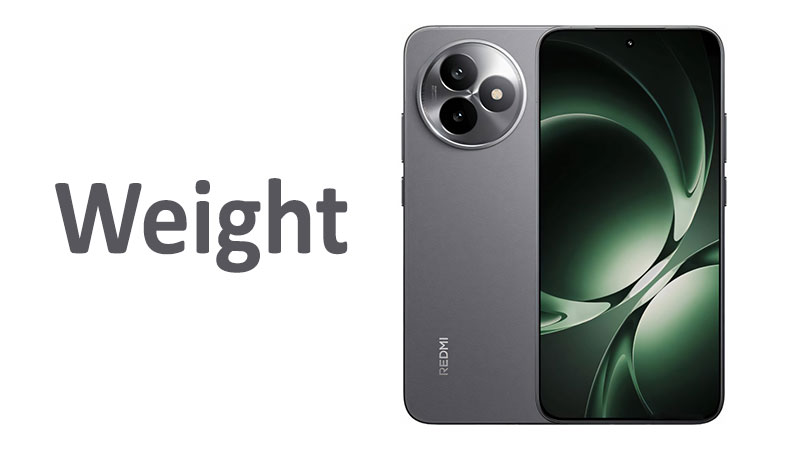The Samsung Galaxy XCover7 Pro weight is a crucial factor for professionals seeking a high-performance, rugged mobile device. This detailed analysis explores the specific mass of the XCover7 Pro in both grams and ounces. It compares its build against predecessors and competitors. Understanding the phone’s weight provides essential insights into its durability, ergonomics, and suitability for various demanding work environments. Consumers prioritize balance between resilience and portability in the rugged phone market. This article helps buyers make an informed decision regarding the overall carry experience and operational handling of the XCover7 Pro.
Detailed Analysis of Samsung Galaxy XCover7 Pro Weight
The weight of any rugged smartphone directly relates to the level of protection it offers. Manufacturers must carefully balance the need for extreme durability against the demands of daily portability. The Samsung Galaxy XCover7 Pro occupies a sweet spot in this balancing act. It delivers military-grade protection without turning into an overly cumbersome device. The phone’s mass reflects the high-quality, dense materials used in its construction.
Official Weight Specifications: 240g (8.47 oz)
The official Samsung Galaxy XCover7 Pro weight is precisely 240 grams. Converting this metric measurement to the imperial system gives a weight of approximately 8.47 ounces. This figure represents the device’s mass with the standard battery installed but without any external cases or accessories. The exact weight might vary slightly by market or regional components, but 240g is the established benchmark. This weight class places the XCover7 Pro firmly in the category of mid-range rugged devices. It is noticeably heavier than a typical flagship consumer smartphone, which often weighs between 170g and 200g. However, it is lighter than many ultra-heavy-duty industrial rugged phones.
The Importance of Weight in a Rugged Device
Weight is often a proxy for internal quality and external toughness in the rugged smartphone segment. A heavier device suggests the inclusion of substantial protective elements. These elements typically include a thick internal frame, robust shock-absorbing polymer shells, and heavy-duty screen protection. The XCover7 Pro needs this weight to achieve its high durability standards. It earns its MIL-STD-810H certification by incorporating materials that resist drops, vibrations, and extreme temperatures. Professionals rely on this solidity. They expect their work phone to survive harsh treatment on job sites or in the field.
Weight also affects user fatigue. An eight-hour shift spent constantly holding a heavy device impacts the user’s hand and wrist. At 240g, the XCover7 Pro maintains a reasonable threshold for extended use. Field technicians, logistics workers, and construction managers appreciate this balance. They require a phone that is tough enough for the environment but light enough for continuous operation. The careful material selection helps Samsung achieve this critical equilibrium.
Specialized Weight Comparisons and Ergonomics
To fully appreciate the Samsung Galaxy XCover7 Pro weight, a comparative analysis is necessary. We must examine how it stacks up against its immediate predecessor and the broader market of competing rugged devices. This comparison highlights Samsung’s design philosophy toward portable ruggedization.
Against its Predecessor: XCover6 Pro
Comparing the XCover7 Pro to the previous generation, the Galaxy XCover6 Pro, reveals a strategic consistency in Samsung’s design. The XCover6 Pro weighed approximately 235 grams (8.29 ounces). The XCover7 Pro, at 240 grams (8.47 ounces), is only marginally heavier. This is an increase of just 5 grams.
This minor difference suggests Samsung maintained the core chassis structure and overall form factor. It indicates that the slight increase likely comes from specific component upgrades. These upgrades include the newer Snapdragon 7s Gen 3 Mobile Platform chipset and perhaps a slightly larger internal structure to accommodate a larger 4350 mAh battery compared to the XCover6 Pro’s 4050 mAh battery. Crucially, the near-identical weight and dimensions mean that many accessories designed for the XCover6 Pro remain compatible with the XCover7 Pro. This is a significant logistical advantage for businesses upgrading their device fleet.
Competing Rugged Phones: The Field
The XCover7 Pro positions itself as a “thin rugged smartphone” when compared to many traditional competitors. Many ultra-rugged phones, which often integrate enormous batteries or industrial features like thermal cameras, exceed 300 grams.
For instance, devices like the Unihertz Titan weigh around 303 grams, primarily due to their large batteries and physical QWERTY keyboards. Heavier, feature-packed devices like the 8849 Tank 3 Pro can weigh a massive 696 grams. The Doogee S200 also tips the scales at 369 grams. These ultra-heavy phones sacrifice portability for extreme battery life or specialized components.
In contrast, the XCover7 Pro’s 240g weight makes it remarkably light for the level of ruggedness provided. Devices like the Motorola ThinkPhone 25, which aims for a rugged yet professional look, is much lighter at 171g. However, the XCover7 Pro still offers comparable or superior durability ratings (IP68, MIL-STD-810H) while offering the advantage of a user-replaceable battery. The XCover7 Pro thus represents a middle ground. It offers superior durability compared to standard consumer phones, but superior portability compared to specialized heavy-duty rugged phones.
Beyond Weight: Dimensions and Handling
Weight cannot be analyzed in isolation. The phone’s dimensions heavily influence how heavy it feels in the hand. The XCover7 Pro measures 168.6 mm in height, 79.9 mm in width, and 10.2 mm in thickness.
The 10.2 mm thickness is significantly greater than the 7 mm to 8 mm thickness of many modern consumer devices. This added bulk is necessary for shock absorption and houses the durable external casing. The bulk and 240g mass together create a device that feels substantial and secure. The rigid chassis minimizes flex, giving users confidence in its protective qualities. The diagonal ridges on the back panel also enhance grip, helping to mitigate accidental drops which the weight might otherwise encourage. The overall design prioritizes secure handling over slim aesthetics.
Key Factors Influencing the XCover7 Pro’s Mass
The 240g weight of the XCover7 Pro is the result of several engineering choices and component selections specific to the rugged category. Understanding these factors provides deeper insight into the device’s design rationale.
Battery Capacity and Removability
The battery is one of the heaviest components in any modern smartphone. The XCover7 Pro features a 4350 mAh lithium-polymer battery. While 4350 mAh is a respectable capacity, it is not the largest in the rugged market. Competitors often boast batteries exceeding 6,000 mAh, contributing significantly to their heavier weights.
However, the XCover7 Pro introduces a critical design choice that affects its construction: the battery is user-replaceable. To allow for easy battery swapping, the phone must have a removable back panel. This panel requires a robust, reinforced locking mechanism and durable seals to maintain the IP68 water and dust resistance rating. The engineering effort and materials dedicated to this removable structure add mass, ensuring the feature works reliably in harsh conditions. The ability to swap batteries in the field provides unlimited power, a trade-off many field workers willingly accept for the 240g weight.
The Rugged Shell: Materials and Protection (MIL-STD-810H)
The main contributor to the XCover7 Pro’s weight is its protective armor. The device is built around stringent durability standards: IP68 and MIL-STD-810H.
The IP68 rating certifies the phone’s resistance to dust ingress and submersion in water up to 1.5 meters for 30 minutes. Achieving this rating requires tight internal sealing and specialized gaskets, all of which contribute a small amount of weight.
More significantly, the MIL-STD-810H certification involves rigorous testing against drops, shocks, vibration, and extreme temperatures. To pass these tests, Samsung utilizes a thick, hardened plastic body and frame. This chassis is designed to absorb and dissipate impact energy. The choice of Corning Gorilla Glass Victus+ for the display also adds weight compared to less durable, thinner glass alternatives. This specialized ruggedization, necessary for surviving drops up to 1.5 meters, explains the difference between the XCover7 Pro’s 240g and a standard phone’s 170g mass.
Internal Components and Screen Technology
The choice of internal components also plays a role. The XCover7 Pro uses a 6.6-inch PLS LCD screen with a 120 Hz refresh rate. While OLED screens are often marginally lighter and thinner, Samsung selected the PLS LCD technology for its durability and cost-effectiveness in a rugged context. LCD panels often require a more substantial backlight assembly, potentially adding a few extra grams.
Furthermore, the device includes specialized features designed for professionals. This includes the dedicated XCover Key and Top Key, which are customizable, physical buttons. These buttons require reinforced hardware and internal mechanisms to withstand constant, repeated use, often while wearing thick work gloves. The pogo pin connectors on the bottom edge for charging and accessories also involve dedicated metal contacts and internal wiring, contributing to the device’s overall weight and density. The sum of these reinforced components makes up the total 240g structure.
Pros and Cons of the XCover7 Pro’s Weight
The mass of the Samsung Galaxy XCover7 Pro creates both advantages and disadvantages for the user. These points are essential for anyone considering a rugged phone for their professional or personal use.
Advantages of Heavier Build
The 240g weight offers several key benefits, particularly in professional settings.
First, the weight instills confidence. A heavier phone generally feels more robust and less prone to damage. Users feel reassured that the device can handle accidental drops or impacts. This psychological factor is important when working in high-risk environments.
Second, the added density enhances handling. The extra weight provides a substantial grip, especially when users operate the phone with gloves or in wet conditions. The mass helps stabilize the phone during one-handed use, making the touch screen easier to manipulate.
Third, the weight is a direct indicator of its protective features. It signifies the presence of the military-grade shock absorption and sealing materials. For buyers prioritizing maximum device protection over aesthetic lightness, the 240g figure is a positive sign. It confirms the phone’s fitness for challenging industrial or outdoor tasks.
Disadvantages for Daily Carry
While beneficial for durability, the 240g weight presents certain drawbacks for general use.
The primary disadvantage is portability and comfort for non-rugged use. Carrying the phone in a shirt pocket or lightweight clothing feels heavier and more noticeable than a typical consumer flagship. Over extended periods, the weight contributes to user fatigue, as mentioned previously. This is a common complaint for people who transition from a light consumer phone to any rugged model.
The mass also increases the kinetic energy during a drop. Although the device is designed to withstand a fall, heavier objects transmit greater impact force. While the external shell handles this, the added weight potentially increases the risk of damage to sensitive internal components if the device lands improperly. However, the MIL-STD-810H rating suggests Samsung mitigated this risk through superior internal cushioning and component placement. Users must be mindful that the overall weight changes significantly when adding a heavy accessory, like a high-capacity power bank or a vehicle-mounted cradle.
Essential Considerations for the Buyer
Potential buyers must consider how the Samsung Galaxy XCover7 Pro weight fits into their specific daily workflow. The target audience for this device benefits greatly from its rugged construction and specific weight profile.
Target Audience and Use Cases
The XCover7 Pro targets professionals in field service, logistics, construction, public safety, and manufacturing. These users require a device that can survive harsh environmental exposure. The 240g weight is perfectly acceptable for these use cases. It represents durability. In many enterprise settings, the phone will spend time in a holster, vehicle mount, or specific protective gear, minimizing the impact of its weight on the user’s hands.
The removable battery functionality is a game-changer for these industries. Workers performing 12-hour shifts or operating in remote locations value the ability to swap a depleted battery for a fresh one instantly. They see the 240g weight as a necessary requirement for including this mission-critical feature, rather than a disadvantage. The focus shifts from casual, lightweight portability to mission-ready operational resilience.
Accessories and Total Carry Weight
The 240g figure is only the starting point for the total carried weight. Most professionals use accessories that add considerable mass.
For instance, adding a POGO pin charging dock for vehicle mounting increases the system’s weight. Specialized belt clips or rugged holsters also add bulk and grams. Buyers should always factor in the weight of a spare, charged battery if they plan on utilizing the hot-swapping feature. Since the XCover7 Pro is designed to be compatible with previous XCover accessories, businesses can reuse existing mounts and docks, which simplifies deployment and logistics. Users need to budget for the combined weight of the phone plus all essential accessories when planning their daily carry.
Conclusion: Making an Informed Decision
The Samsung Galaxy XCover7 Pro weight of 240 grams (8.47 ounces) positions it as an optimally balanced choice within the specialized rugged smartphone market. It is heavier than consumer flagships, which is necessary to accommodate its military-grade MIL-STD-810H durability and its IP68 water and dust resistance. This mass ensures the structural integrity required to survive harsh environments.
Samsung achieved a remarkable balance by slightly increasing the weight from the XCover6 Pro. This small increase supports new internal components and a slightly larger battery. The XCover7 Pro avoids the extreme weight of ultra-rugged competitors, making it a viable option for all-day use without excessive fatigue. Buyers must recognize the 240g as an investment in resilience. They gain a device that offers superior protection, a user-replaceable battery, and modern performance in a reasonably portable package. The XCover7 Pro is an excellent choice for professionals who demand tough reliability without the burden of an excessively bulky or heavy industrial handset.
Frequently Asked Questions (FAQ)
What is the exact weight of the Samsung Galaxy XCover7 Pro in metric and imperial units?
The exact weight of the Samsung Galaxy XCover7 Pro is 240 grams. This measurement converts to approximately 8.47 ounces.
Why is the XCover7 Pro heavier than standard flagship smartphones?
The XCover7 Pro is heavier because its design incorporates a thick, shock-absorbing polymer frame, specialized internal cushioning, and Corning Gorilla Glass Victus+ to achieve MIL-STD-810H and IP68 durability ratings.
Does the XCover7 Pro’s removable battery feature add to its total weight?
Yes, the removable battery design requires a reinforced back panel and complex sealing mechanisms. These components add necessary structural weight to the device to maintain its rugged certification and water resistance.
How does the XCover7 Pro weight compare to its predecessor, the XCover6 Pro?
The XCover7 Pro, at 240g, is only slightly heavier than the Galaxy XCover6 Pro, which weighed 235g. This minor difference suggests a consistent, ergonomic design philosophy between generations.
Is the 240g weight suitable for carrying in a standard pocket all day?
The 240g mass is noticeable in a standard pocket, especially compared to lighter consumer phones. However, the weight is generally considered acceptable for continuous professional use, especially for workers accustomed to carrying rugged or heavy-duty equipment.



